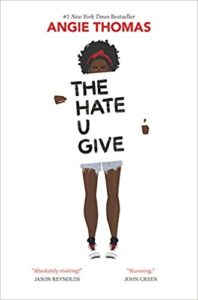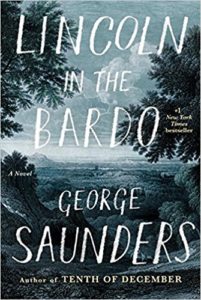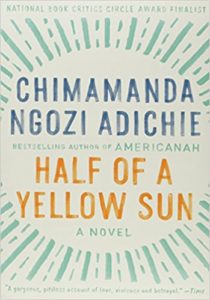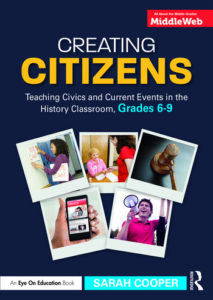Turning History’s Stories into Classroom Gold
A MiddleWeb Blog
 Late in the summer before I began my first year of teaching, I remember finally mustering the determination – or panic – to dig into the seventh-grade ancient history textbook.
Late in the summer before I began my first year of teaching, I remember finally mustering the determination – or panic – to dig into the seventh-grade ancient history textbook.
Although I made it only to page 70 that August – barely out of Rome – I realized that the purpose of this kind of reading was very different from my scrutiny of history and literature in college.
Everything I found interesting from the textbook, I was going to use – not simply to write a paper that a professor would read, but to communicate the intricacy of history to kids who knew nothing about it.
Augustus’ reign could become an example of power taken too far. Rome’s engineering ingenuity could inspire future builders and architects. The information lay ready to alchemize, in a moment, into something 12-year-olds could appreciate.
As a teacher now, I still see almost everything I read as fodder for the classroom. But it’s not always easy to figure out how to incorporate bits of books and articles into units that whiz by.
Transmuting history into classroom gold
Here is a think-aloud, wondering about strategies to incorporate some of my own recent summer reading into eighth-grade U.S. history class this year. “Wondering” is the operative word, because some of the pieces dazzle, but perhaps in ways too long or complex to share.
The strategies begin with what I see as easiest and evolve into hardest.
- EASIEST: Recommending a high-interest young adult novel to students. As a onetime English teacher, I’ve always believed in the magic of young adult books to tell stories directly and memorably.

This summer, I read Angie Thomas’ searing The Hate U Give, a look at police brutality toward the black community, after a twelfth grader in our student book club said she couldn’t put it down.
This year, I’ll suggest the book to eighth graders who might be able to handle the mature language, and I’ll also recommend it to colleagues who can then pass it along to other students.
- PRETTY EASY: Picking excerpts from a memoir or series of essays to use in class.
As much as I adore reading a whole novel and then recommending it, nonfiction can be simpler to excerpt for history class because it can often stand on its own, without excessive explanation or background.
This year I hope to use bits of two nonfiction books, a memoir and a series of essays, to illustrate both national and international conflicts.
A new YA memoir, How Dare the Sun Rise: Memoirs of a War Child by Sandra Uwiringiyimana with Abigail Pesta, transforms the recent conflicts in the Democratic Republic of the Congo from faraway headlines to immediate memory. Along with the narrator, we experience the wonders of a peaceful African childhood followed by the horrors of a refugee camp.
The memoir pairs well with our school’s eighth-grade English summer reading book: I Am Malala: The Girl Who Stood Up for Education and Was Shot by the Taliban by Malala Yousafzai with Christina Lamb. We chose this because we hope it will help our middle schoolers gain awareness of world issues and find ways they can contribute to solving them.
I also would like to pull in parts of essays from Michael Eric Dyson’s Tears We Cannot Stop: A Sermon to White America, especially selections that narrate how the author’s children have encountered racism.
- HARDER: Choosing primary source excerpts that are comprehensible and tell a story.

This hybrid creation delves into Lincoln’s head and heart in ways I’ve rarely seen, and I can’t wait to show pieces of it to my students during our Civil War unit.
- HARDEST: Distilling a novel to its essence. This is one of most difficult classroom “translations” to achieve, because the brilliance of novels often comes in their scope of story and depth of character.

It’s impossible to communicate the whole novel to eighth graders without their reading it, and parts are not appropriate for every eighth grader to read. If I use this in class, I will probably choose two descriptive sections that show what Lagos looked like before and after the war, to indicate the ravages conflict can wreak.
A timeless strategy: Storytelling
Regardless of which fiction and nonfiction excerpts show up in my classroom this year, I know I’ll also incorporate one of the oldest teaching techniques out there: telling stories based on what I’ve read. Stories that make the world seem bigger, more complex, more human. Stories that remind us why we read, after all, in the first place.
________________________________________________________________________




































